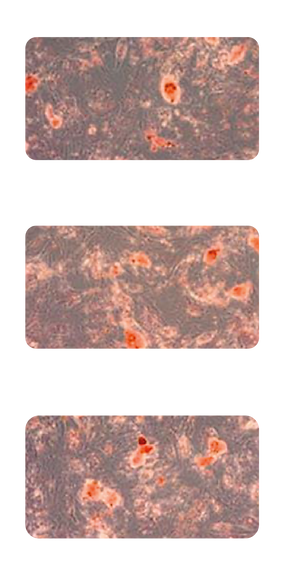

QMR
(Quantum Molecular Resonance)
is an innovative technology that induces a regenerative effect of the human cells.

QMR is the only Technology that induces a true regeneration of damaged tissue by interacting with adult stem cells.
QMR uses a wide spectrum of different frequencies which are transmitted simultaneously to the human body (each frequency interacts in a slightly different way than the others). This peculiar spectrum of frequencies is able to trigger the regeneration effect of the stem cells thus creating new cells which will replace the damaged ones

The tissue regeneration
After several years of research conducted in collaboration with the Department of Human Anatomy and Physiology of the University of Padua, it has been discovered that, when the high frequency electrical fields generated by QMR interact with the muscle cells in culture, the metabolic pathways are activated and produce the following effects:
1
Mechanical effect

It has been observed that single muscle cells, stimulated by QMR, undergo a series of contractions and relaxations, when the field is turned on or off.
Electrical effect
2

When QMR is activated the membrane potential depolarizes, to return to its "resting" potential when QMR stimulation is interrupted.
3
Biochemical effect

A consistent release of calcium ions by the sarcoplasmic reticulum was found when the cell is stimulated by QMR.
This is a signal of activation of calcium-dependent intracellular pathways.
The combination of these effects, by inducing cells proliferation
(growth of new cells), enables the regeneration of
QMR-stimulated tissues
Evident absence of cellular damage
Adipogenic and osteogenic differentiation after QMR cycles of stimulation.
Panels display one representative experiment showing the final outcome in MSC multilineage differentiation after 21 days of induction. QMR-treated (80 nominal powers) and untreated samples (CTL+) were induced to differentiation. Osteogenic differentiation (A) after QMR stimulation was assessed using Alizarin Red. Adipogenic differentiation (B) were detected using Oil Red O.
Scale bar = 100 μm. Total magnification = 100x.
Osteocytes (A)
Adipocytes (B)

Not treated (CTL+)
QMR 80: 1° cycle
QMR 80: 2° cycle

Not treated (CTL+)
QMR 80: 1° cycle
QMR 80: 2° cycle

